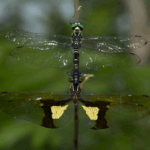
blog
Eastern Pondhawk: Key Facts on Habitat, Diet
Over 350 million years ago, dragonflies first started to zip around ponds, marshes, and other bodies of water.
This prehistoric insect belongs to the Odonata family, along with their closely related cousin-insects, damselflies.
There are over 3,000 known dragonfly species living on nearly every continent in the world.
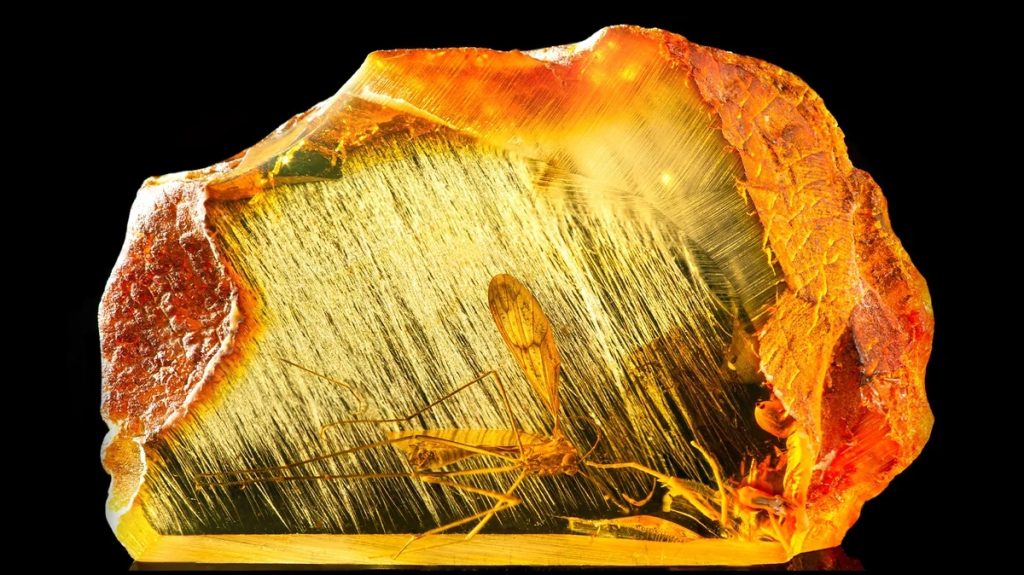
These Ancient Insects Have Truly Surprising Qualities
Prehistoric-looking dragonflies can be a little intimidating as they swoop about the summer skies. In fact, according to one dragonfly myth, the uncanny creatures would sew up the lips of unsuspecting humans. Of course, that’s not even remotely true. Dragonflies are essentially harmless. Even better, these large-eyed aeronauts love to feed on pests like mosquitoes and midges for which we can be truly grateful—but those aren’t the only interesting qualities that make them so fascinating.
1. Dragonflies Are Ancient Insects
Long before the dinosaurs roamed the Earth, dragonflies took to the air. Griffenflies (Meganisoptera), the gigantic precursors to modern dragonflies had wingspans of over two feet Pupke, Chris. “Dragonflies -The Hawks of the Insect World Are Important Environmental Indicators.” Biophilia Foundation. and dotted the skies during the Carboniferous period over 300 million years ago.
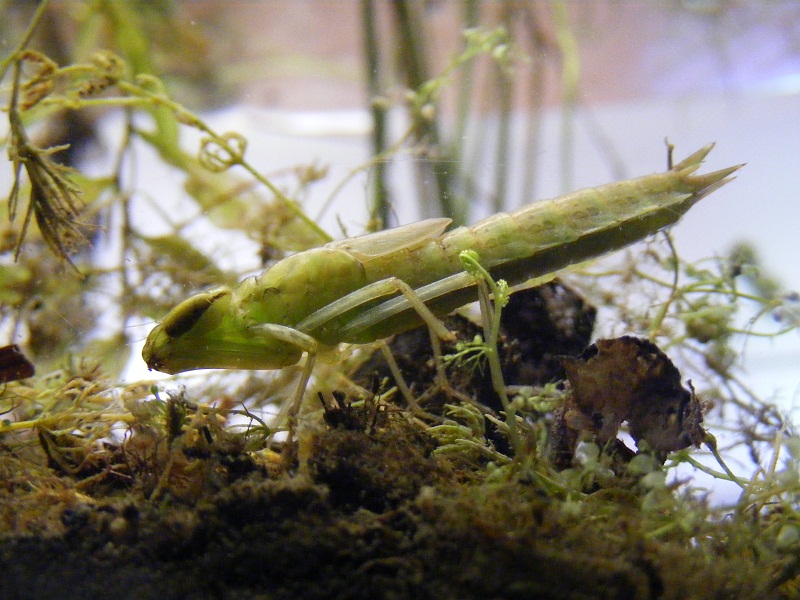
2. Dragonfly Nymphs Live In the Water
There’s a good reason why you see dragonflies and damselflies around ponds and lakes: They’re aquatic! Female dragonflies deposit their eggs on the water’s surface, or in some cases, insert them into aquatic plants or moss. Once hatched, the nymph dragonfly spends its time hunting other aquatic invertebrates. Larger species even dine on the occasional small fish or tadpole. After molting somewhere between six and 15 times, a dragonfly nymph is finally ready for adulthood and crawls out of the water to shed its final immature skin.
3. Nymphs Breath Through Their Anus
The damselfly nymph actually breathes through gills inside its rectum. Likewise, the dragonfly nymph pulls water into its anus to facilitate gas exchange. When the nymph expels water, it propels itself forward, providing the added benefit of locomotion to its breathing.
4. Most New Dragonfly Adults Are Eaten
When a nymph is finally ready for adulthood, it crawls out of the water onto a rock or plant stem and molts one final time. This process takes several hours or days as the dragonfly expands to its full body capacity.2 These newly emerged dragonflies, known at this stage as teneral adults, are soft-bodied, pale, and highly vulnerable to predators. Until their bodies fully harden they are weak flyers, making them ripe for the picking. Birds and other predators consume a significant number of young dragonflies in the first few days after their emergence.
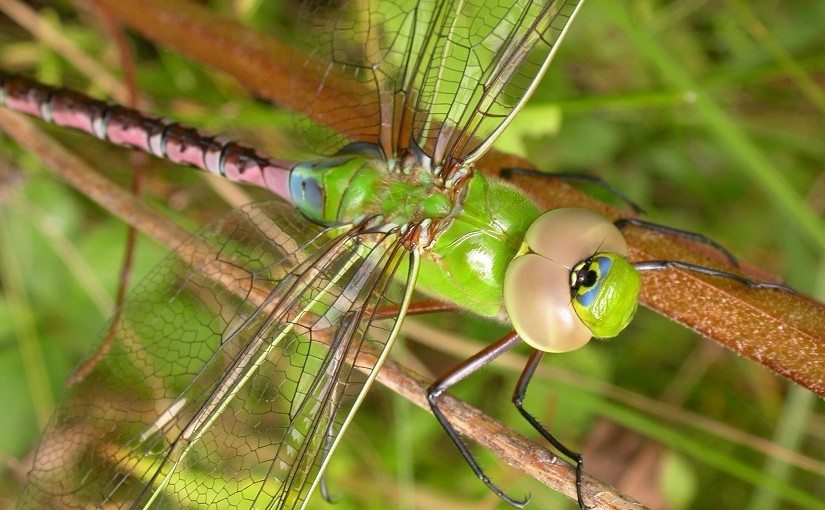
5. Dragonflies Have Excellent Vision
Relative to other insects, dragonflies have extraordinarily keen vision that helps them detect the movement of other flying critters and avoid in-flight collisions. Thanks to two huge compound eyes, the dragonfly has nearly 360° vision and can see a wider spectrum of colors than humans. Each compound eye contains 28,000 lenses or ommatidia and a dragonfly uses about 80% of its brain to process all of the visual information it receives.
6. Dragonflies Are Masters of Flight
Dragonflies are able to move each of their four wings independently. They can flap each wing up and down, and rotate their wings forward and back on an axis. Dragonflies can move straight up or down, fly backward, stop and hover, and make hairpin turns—at full speed or in slow motion. A dragonfly can fly forward at a speed of 100 body lengths per second (up to 30 miles per hour).
7. Male Dragonflies Fight for Territory
Competition for females is fierce, leading male dragonflies to aggressively fend off other suitors. In some species, males claim and defend a territory against intrusion from other males. Skimmers, clubtails, and petaltails scout out prime egg-laying locations around ponds. Should a challenger fly into his chosen habitat, the defending male will do all he can to chase away the competition. Other kinds of dragonflies don’t defend specific territories but still behave aggressively toward other males that cross their flight paths or dare to approach their perches.
8. Male Dragonflies Have Multiple Sex Organs
In nearly all insects, the male sex organs are located at the tip of the abdomen. Not so in male dragonflies. Their copulatory organs are on the underside of the abdomen, up around the second and third segments. Dragonfly sperm, however, is stored in an opening of the ninth abdominal segment. Before mating, the dragonfly has to fold his abdomen in order to transfer his sperm to his penis.
9. Some Dragonflies Migrate
A number of dragonfly species are known to migrate, either singly or en masse. As with other migratory species, dragonflies relocate to follow or find needed resources or in response to environmental changes such as impending cold weather. Green darners, for example, fly south each fall in sizeable swarms and then migrate north again in the spring. Forced to follow the rains that replenish their breeding sites, the globe skimmer—one of several species that’s known to spawn in temporary freshwater pools—set a new insect world record when a biologist documented its 11,000 mile trip between India and Africa.
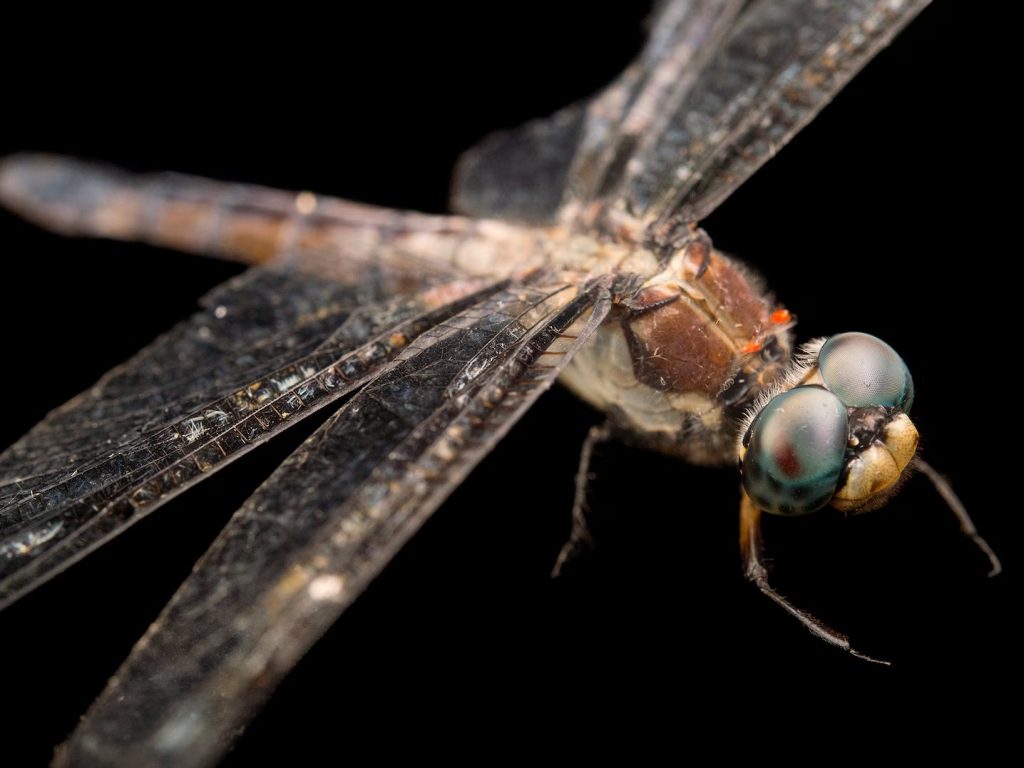
10. Dragonflies Thermoregulate Their Bodies
Like all insects, dragonflies are technically ectotherms (“cold-blooded”), but that doesn’t mean they’re at the mercy of Mother Nature to keep them warm or cool. Dragonflies that patrol (those that habitually fly back and forth) employ a rapid whirring movement of their wings to raise their body temperatures. Perching dragonflies, on the other hand, who rely on solar energy for warmth, skillfully position their bodies to maximize the surface area exposed to sunlight. Some species even use their wings as reflectors, tilting them to direct the solar radiation toward their bodies. Conversely, during hot spells, some dragonflies strategically position themselves to minimize sun exposure, using their wings to deflect sunlight.
Dragonfly Facts and Life Cycle
Surprisingly, these brilliantly colored masters of the air are classified as aquatic insects because they spend most of their lives as larvae underwater among plants or in silt. They may spend five years or more in the larval stage, molting several times before emerging as adults—and then living only a few weeks to a few months.
With keen eyesight and expert airmanship, dragonflies and damselflies easily outmaneuver and catch insect prey. Their four gossamer wings move independently, allowing them to fly forward, backward, and sideways, or to just hover in place. Bead-like eyes provide 360–degree stereovision, allowing them to spot insects in any direction without turning or moving their heads. (In fact, dragonflies have the biggest eyes in the insect world.)
Dragonflies and damselflies, though similar in their life cycle and appearance, fly differently. You can distinguish them by noticing that dragonflies fly directly and purposefully, while the damselfly’s flight is more fluttery. The damselfly also has a slightly longer abdomen.
What do Dragonflies Eat?
The dragonflies’ and damselflies’ fondness for mosquitoes puts them in the category of beneficial insects, but they eat many other annoying bugs. Their diet includes midges, moths, flies, and other flying insects. Unfortunately, they also sometimes eat butterflies. This means that planting flowers that attract butterflies might keep your yard full of both species.
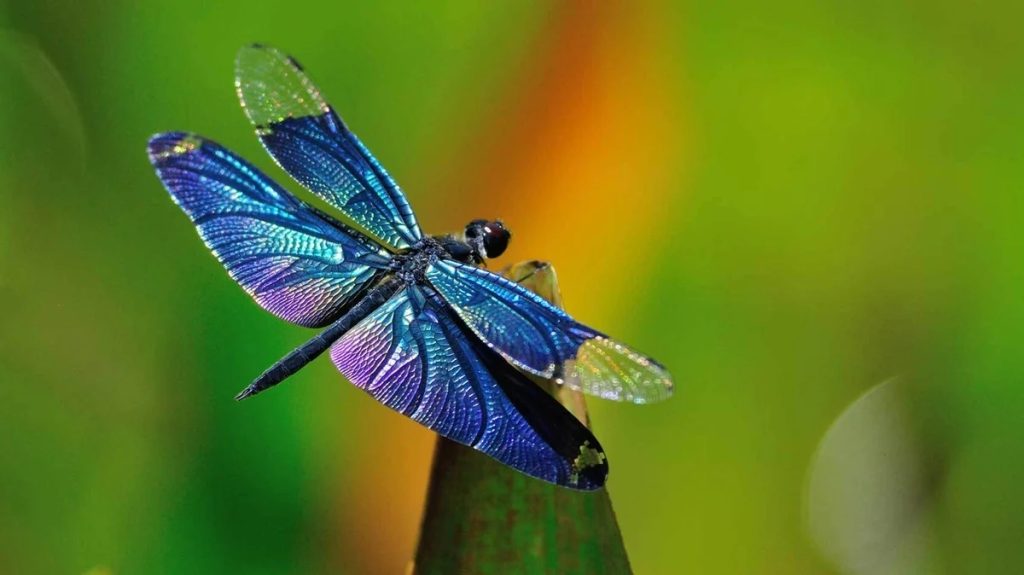
Dragonflies aren’t just beneficial as mosquito-eaters. Their role as barometers of wetland health is also very important. To survive, odonate larvae need clean, well-oxygenated water. Drainage of wetlands, pollution from farming and industry, and the development of new roads and houses have increasingly reduced dragonfly habitat. Conservation of existing wetlands is key to odonate survival, as is providing new habitats for them to colonize.
Fossil records show that dragonflies existed for 100 million years before the dinosaurs. These prehistoric predators had over three-foot wingspans and were the largest insects known. Imagine if they were that big now—a dainty dragonfly landing on your finger would not seem quite so charming!
If you’ve ever watched a dragonfly speed over the water, you know how captivating they are!
But while they’re among the oldest flying insects – they’ve been around for 250-300 million years — scientists are still just learning about them.
They are not actually flies
Dragonflies have flown through history for more than 300 million years – some fossils have shown dragonflies with wingspans of nearly 3 feet! – so humans have had plenty of time to spin lots of mythology around these unique-looking creatures.
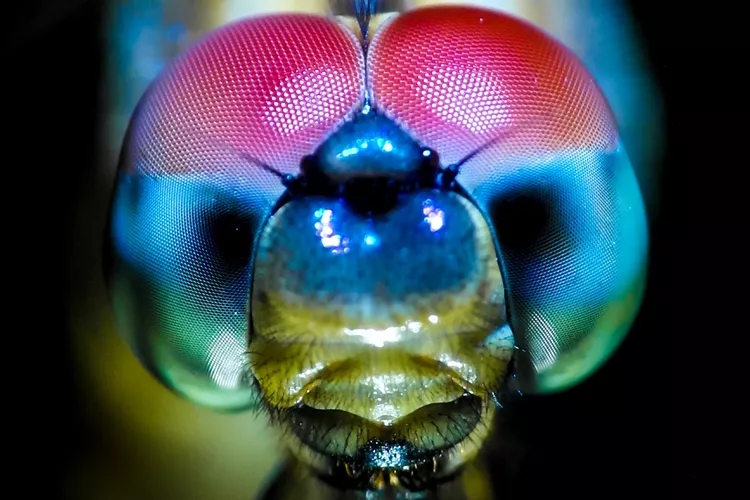
Wildlife names can be deceiving, and dragonflies are no exception. While they have “fly” in their name, they don’t belong to the insect order Diptera, (“two-wings”), the true flies. Instead, dragonflies belong to the order Odonata (roughly, “the toothy ones”). Specifically, dragonflies make up the sub-order Anisoptera (“uneven-wings”), as opposed to their cousins the damselflies or Zygoptera (“paired-wings”).
I’ve saved the scariest facts about dragonflies for last. This one is a candidate for my post on scariest nature facts. While adult dragonflies are excellent hunters, their young naiads are no exception. These intense ambush predators will hunt all kinds of underwater prey, including small fish!
A dragonfly nymph’s lower lip is a clawed “arm” that they can shoot out and seize prey. It’s a lot like the creepy “second mouth” that the creatures from Alien eat people with. This special appendage can be up to one-third the length of the nymph’s body. Even scarier, it can shoot out in 0.01 seconds to seize prey! Now if that’s not nightmare fuel, I don’t know what is.
Dragonflies serve as food for many different aquatic species and amphibians, birds, and even mammals. Fish, frogs, newts, and other larger aquatic creatures eat the dragonfly nymphs. Adult dragonflies are food for birds, lizards, bats, and even spiders!
Our Favorite Fun Dragonfly Facts
Dragonflies are pretty amazing. Some come in bright, sometimes iridescent colors like blue, green, gold, and even red. These are our favorite facts about these fascinating insects:
#1 Dragonflies are fast flyers!
They can fly at speeds up to 34 mph.
#2 Dragonflies can fly in any direction.
They can hover in mid-air, fly right, left, up, down, forwards, and even backwards.
#3 Dragonflies can accelerate with a lot of force compared to their body size.
The G force of a dragonfly making a turn can be as high as 9 times for the force of gravity, while when flying in straight line it can be as high 4G. That’s a lot of G’s for such a small insect. In comparison, most humans will pass out around 4 or 5 G’s.
#4 Dragonflies are found on every continent except Antarctica
There are over 5,000 species of dragonflies. Most of these are found in the tropics.
#5 Some species of dragonflies migrate.
The globe skimmer (Pantala flavescens) has the longest dragonfly migration known to science – about 11,000 miles.
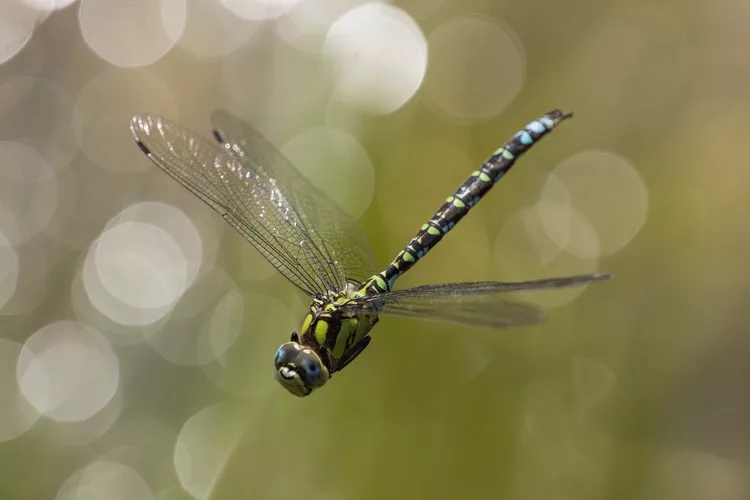
#6 Dragonflies are predators.
As nymphs they feed on aquatic insects, fish, tadpoles, and mosquito larvae. As adults, they eat other flying insects, including mosquitoes and biting flies.
#7 To cool off, dragonflies will skim the surface of a pond or lake.
The water helps to reduce their body temperature as it evaporates.
#8 Dragonflies gather in swarms.
There are two types of swarms – one for migration and one for feeding. If you see a group of dragonflies hovering a few feet over the ground, flying back and forth in the same area, they are feeding.
#9 Dragonflies see ultraviolet light.
This helps them to better see their prey.
#10 Dragonflies do not sting.
Instead, they use their amazing flying skills and ability to track the movement of prey to catch insects in mid-flight, using their legs to hold their prey.
They’re the oldest insect, their vision and flight is unmatched, and they’re pretty damn beautiful too!
Given their extensive history on earth and their incredible abilities, I wouldn’t be surprised if they end up outliving most insects that we know today!

Eastern Pondhawk: Key Facts on Habitat, Diet
The Eastern Pondhawk, also known as the common pondhawk, is found throughout the eastern United …
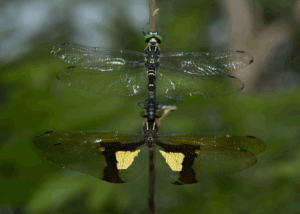
Chlorogomphus Dragonflies Facts: Habitat, Diet, and Life Cycle Explained
Two new species of the genus Chlorogomphus are described based on both sexes collected from …
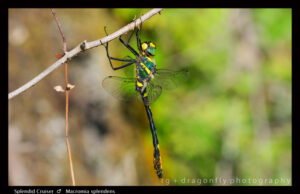
Macromia splendens: Secrets of Europe’s Rare River Dragonfl
Macromia splendens is a species of dragonfly in the family Macromiidae. It is found in …
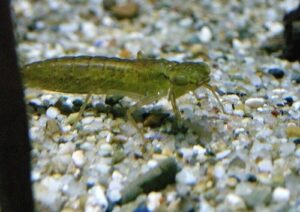
Exploring Dragonfly Larvae : Habitat, Diet, and Life Cycle Facts
A dragonfly is a member of the suborder Anisoptera and the order Odonata. Although small …

Blue Dragonfly Facts: Habitat, Diet, and Life Cycle Uncovered
The Blue Dasher, scientifically known as Pachydiplax longipennis, is a dragonfly species belonging to the …

Eastern Pondhawk: Key Facts on Habitat, Diet
The Eastern Pondhawk, also known as the common pondhawk, is found throughout the eastern United …

Chlorogomphus Dragonflies Facts: Habitat, Diet, and Life Cycle Explained
Two new species of the genus Chlorogomphus are described based on both sexes collected from …

